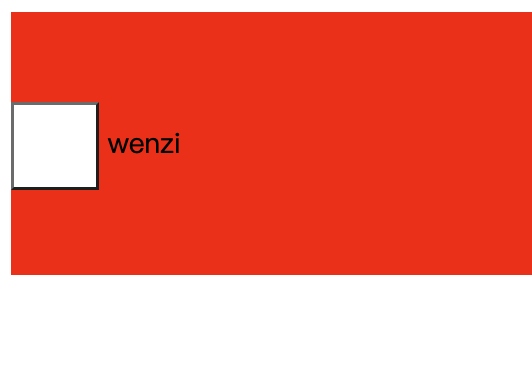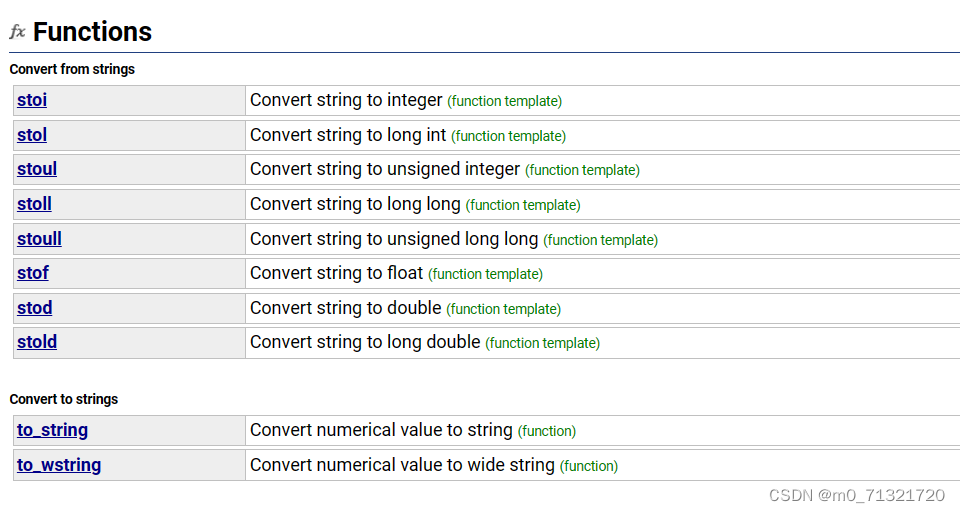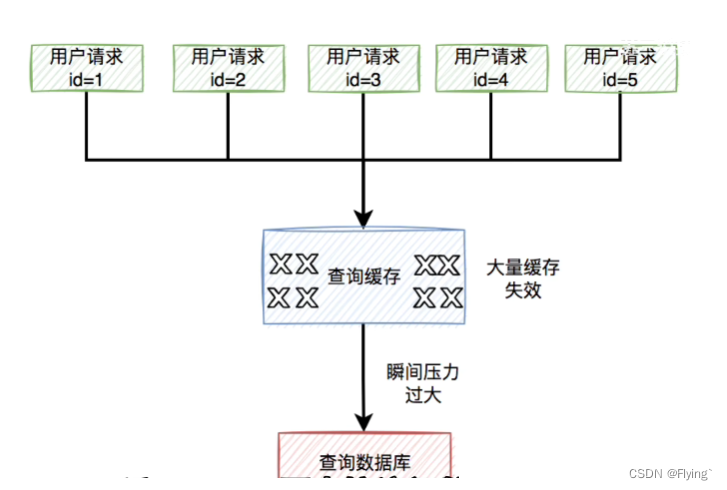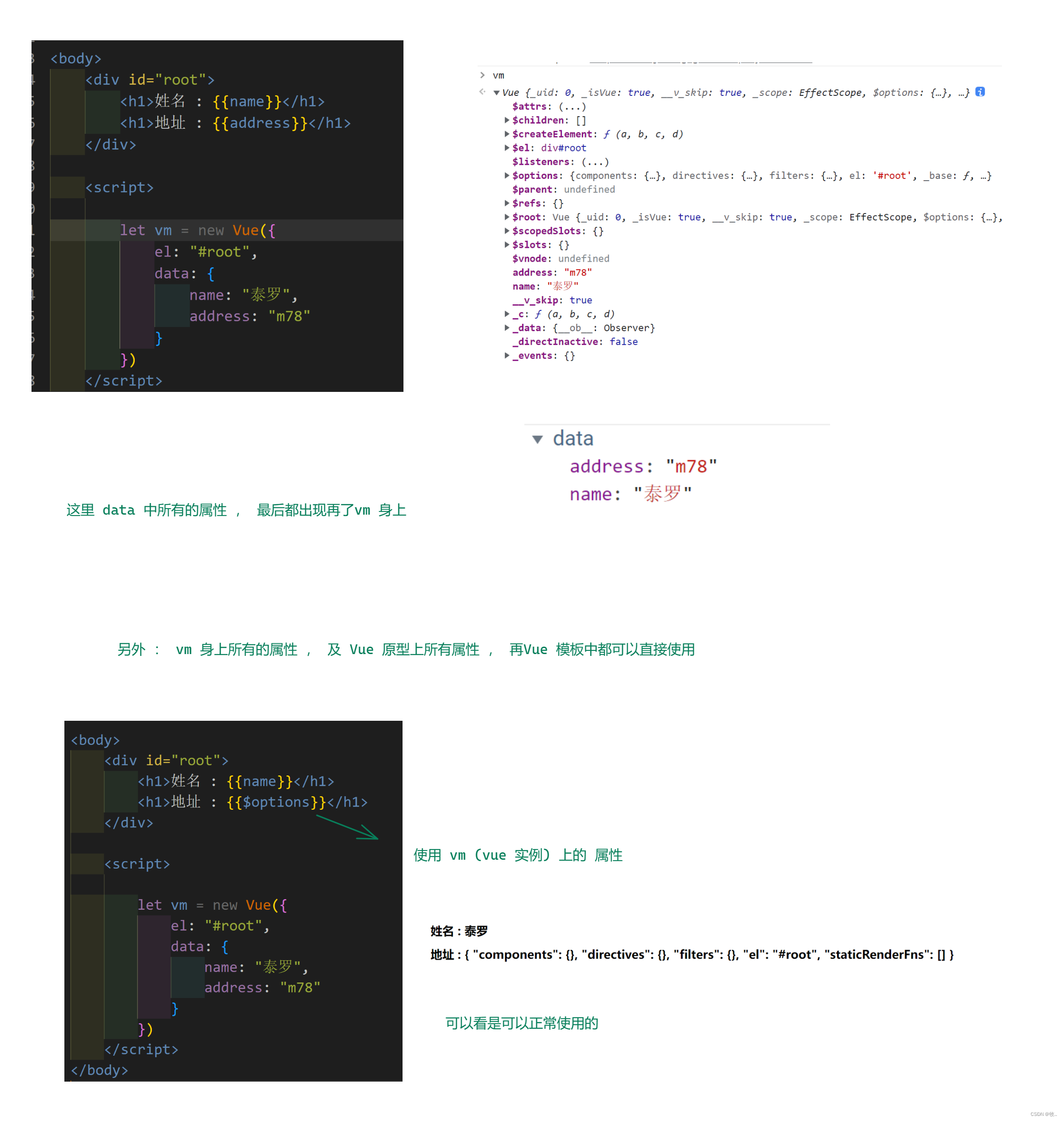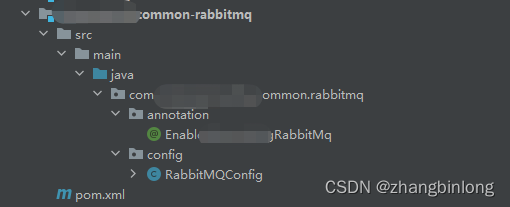🌠作者:@阿亮joy.
🎆专栏:《数据结构与算法要啸着学》
🎇座右铭:每个优秀的人都有一段沉默的时光,那段时光是付出了很多努力却得不到结果的日子,我们把它叫做扎根
目录
- 👉前缀树的实现👈
- 什么是前缀树
- 节点的定义
- 构造函数
- 插入字符串
- 查找字符串和前缀
- 析构函数
- 删除字符串
- 打印前缀树
- 完整代码
- OJ题:实现前缀树
- 👉总结👈
👉前缀树的实现👈
什么是前缀树
Trie(发音类似 “try”),被称为前缀树或字典树,是一种树形的数据结构,可用于高效地存储和检索字符串数据集中的键。这个数据结构有相当多的应用情景,例如自动补完和拼写检查。下图就是经典的前缀树,我们接下来要实现的前缀树的节点存储的数据比较丰富,以达到特定字符串在树中出现几次等类似的功能。
节点的定义
// 前缀树节点的定义
// 假设字符都是小写字母
struct TrieNode
{
int pass = 0; // 有几个字符串经过该节点(前缀包含这个字符的字符串数量)
int end = 0; // 以该节点为结尾的字符串的数量,如果不允许字符串重复插入,可以改成bool
// next[0] == nullptr 表示没有走向'a'的路
// next[0] != nullptr 表示有走向'a'的路
// ...
// next[25] != nullptr 表示有走向'z'的路
TrieNode* next[26] = { nullptr }; // 26个空位,准备挂下一个节点'a'-'z',没有挂节点时为nullptr
// 如果字符种类个数比较多,可以将数组换成哈希表或者set
};
构造函数
前缀树是用哨兵位头节点来管理整棵前缀树的,所以其构造函数需要 new 上一个哨兵位头节点。
class Trie
{
typedef TrieNode Node;
public:
Trie()
{
_root = new Node();
}
private:
Node* _root = nullptr; // 哨兵位头节点,可以用来求前缀树中字符串的数量,也可以求空串的数量
};
注:哨兵位头节点的 pass 值可以表示前缀树含有的字符串数量,end 值可以表示前缀树含有空串的数量。因为任何字符串都会以空串作为前缀,都会经过哨兵位头节点。
插入字符串
我们从哨兵位头节点开始,插入字符串。对于当前字符对应的子节点,有以下两种情况:
- 子节点存在:沿着指针移动到子节点,继续处理下一个字符。
- 子节点不存在:创建一个新的子节点,记录在 next 指针数组的对应的位置上,然后沿着指针移动到子节点,继续处理下一个字符。
- 插入字符串的同时,还需要更新沿途节点的 pass 值。
插入字符串图解:
class Trie
{
public:
void Insert(const string& str)
{
Node* cur = _root;
++cur->pass; // 任何一个字符串都需要经过哨兵位头节点
for (size_t i = 0; i < str.size(); ++i)
{
size_t index = str[i] - 'a';
// 如果之前没有字符串经过该节点,则需要建出新节点
if (cur->next[index] == nullptr)
{
cur->next[index] = new Node();
}
cur = cur->next[index];
++cur->pass;
}
// cur指向字符串的最后一个节点,++cur->end表示多了一个字符串以该节点结尾
++cur->end;
}
}
如果不需要插入重复字符串,可以将函数的返回值改成 bool 类型。
查找字符串和前缀
class Trie
{
public:
// 查找前缀树中有多少个要查找的字符串
size_t Search(const string& str) const
{
Node* cur = _root;
for (auto ch : str)
{
// 找的过程发现没路了,说明树中不存在要查找的字符串
if (cur->next[ch - 'a'] == nullptr)
{
return 0;
}
cur = cur->next[ch - 'a'];
}
// cur是str最后一个字符,cur->end表示树中有多少个str
return cur->end;
}
// 查找树中有多少个字符串以前缀prefix为前缀
size_t StartsWith(const std::string& prefix) const
{
Node* cur = _root;
for (auto ch : prefix)
{
// 找的过程中发现没有路,则说明没有字符串以prefix为前缀
if (cur->next[ch - 'a'] == nullptr)
{
return 0;
}
cur = cur->next[ch - 'a'];
}
// cur->pass表示有多少个字符串以prefix为前缀
return cur->pass;
}
}
注:查找的过程和插入的过程非常的相似,只是查找时发现没有路,就直接返回 0,表示树中没有该字符串或者树中的字符串不以 prefix 为前缀。注:如果树中有要查找的字符串 str,则 cur->end 表示树中有多少个 str;如果树有字符串以 prefix 为前缀,则 cur->pass 表示多少个字符串以 prefix 为前缀。
析构函数
class Trie
{
typedef TrieNode Node;
public:
~Trie()
{
Destroy(_root);
}
private:
void Destroy(Node* root)
{
// 先销毁孩子节点,才能够销毁自己
for (int i = 0; i < 26; ++i)
{
// root->next[i]不为空,则说明有节点,需要递归释放节点
if (root->next[i] != nullptr)
{
Destroy(root->next[i]);
}
}
delete root;
}
}
前缀树析构时,需要先释放孩子节点,才能够释放哨兵位头节点。而孩子节点有可能会有孩子节点,所以我们可以采用递归去释放节点。
删除字符串
class Trie
{
typedef TrieNode Node;
public:
// 从树中删除字符串str,注:如果有多个str,只会删除一次
void Erase(const string& str)
{
// 树中没有str,无法删除
if (Search(str) == 0)
return;
Node* cur = _root;
--cur->pass;
for (size_t i = 0; i < str.size(); ++i)
{
size_t index = str[i] - 'a';
// 如果发现str是唯一经过该节点的字符串
// 那么就需要递归去释放当前节点及后续路径的节点
if (--cur->next[index]->pass == 0)
{
Destroy(cur->next[index]); // 递归释放节点
cur->next[index] = nullptr; // next需要置为nullptr
return;
}
cur = cur->next[index];
}
// 如果字符串的所有字符都删除了一遍,还有该路径,那么最后要
// --cur->end,表明树中str的个数减少了一个
--cur->end;
}
}
删除字符串时,需要看树中是否有需要删除的字符串。如果没有,直接 return 即可。如果有,才进行删除。进行删除时,如果发现 str 是唯一经过该节点的字符串,那么就需要递归去释放当前节点及后续路径的节点。
打印前缀树
class Trie
{
typedef TrieNode Node;
public:
void Print() const
{
cout << "根节点:[" << "pass: " << _root->pass << " end: " << _root->end << "]" << endl;
_Print(_root);
}
private:
void _Print(Node* root) const
{
if (root == nullptr)
return;
for (int i = 0; i < 26; ++i)
{
if (root->next[i] == nullptr)
continue;
else
{
cout << "节点" << (char)('a' + i) << ":[pass: " << root->next[i]->pass << " end: " << root->next[i]->end << "]" << endl;
_Print(root->next[i]);
}
}
}
}
完整代码
#pragma once
#include <vector>
#include <string>
#include <iostream>
using namespace std;
// 前缀树节点的定义
// 假设字符都是小写字母
struct TrieNode
{
int pass = 0; // 有几个字符串经过该节点(前缀包含这个字符的字符串数量)
int end = 0; // 以该节点为结尾的字符串的数量,如果不允许重复插入,可以改成bool
// next[0] == nullptr 表示没有走向'a'的路
// next[0] != nullptr 表示有走向'a'的路
// ...
// next[25] != nullptr 表示有走向'z'的路
TrieNode* next[26] = { nullptr }; // 26个空位,准备挂下一个节点'a'-'z',没有挂节点时为nullptr
// 如果字符种类个数比较多,可以将数组换成哈希表或者set
};
class Trie
{
typedef TrieNode Node;
public:
Trie()
{
_root = new Node();
}
~Trie()
{
Destroy(_root);
}
// 查找前缀树中有多少个要查找的字符串
size_t Search(const string& str) const
{
Node* cur = _root;
for (auto ch : str)
{
// 找的过程发现没路了,说明树中不存在要查找的字符串
if (cur->next[ch - 'a'] == nullptr)
{
return 0;
}
cur = cur->next[ch - 'a'];
}
// cur是str最后一个字符,cur->end表示树中有多少个str
return cur->end;
}
// 查找树中有多少个字符串以前缀prefix为前缀
size_t StartsWith(const std::string& prefix) const
{
Node* cur = _root;
for (auto ch : prefix)
{
// 找的过程中发现没有路,则说明没有字符串以prefix为前缀
if (cur->next[ch - 'a'] == nullptr)
{
return 0;
}
cur = cur->next[ch - 'a'];
}
// cur->pass表示有多少个字符串以prefix为前缀
return cur->pass;
}
// 插入字符串
void Insert(const string& str)
{
Node* cur = _root;
++cur->pass; // 任何一个字符串都需要经过哨兵位头节点
for (size_t i = 0; i < str.size(); ++i)
{
size_t index = str[i] - 'a';
// 如果之前没有字符串经过该节点,则需要建出新节点
if (cur->next[index] == nullptr)
{
cur->next[index] = new Node();
}
cur = cur->next[index];
++cur->pass;
}
// cur指向字符串的最后一个节点,++cur->end表示多了一个字符串以该节点结尾
++cur->end;
}
// 从树中删除字符串str,注:如果有多个str,只会删除一次
void Erase(const string& str)
{
// 树中没有str,无法删除
if (Search(str) == 0)
return;
Node* cur = _root;
--cur->pass;
for (size_t i = 0; i < str.size(); ++i)
{
size_t index = str[i] - 'a';
// 如果发现str是唯一经过该节点的字符串
// 那么就需要递归去释放当前节点及后续路径的节点
if (--cur->next[index]->pass == 0)
{
Destroy(cur->next[index]); // 递归释放节点
cur->next[index] = nullptr; // next需要置为nullptr
return;
}
cur = cur->next[index];
}
// 如果字符串的所有字符都删除了一遍,还有该路径,那么最后要
// --cur->end,表明树中str的个数减少了一个
--cur->end;
}
void Print() const
{
cout << "根节点:[" << "pass: " << _root->pass << " end: " << _root->end << "]" << endl;
_Print(_root);
}
private:
void Destroy(Node* root)
{
// 先销毁孩子节点,才能够销毁自己
for (int i = 0; i < 26; ++i)
{
if (root->next[i] != nullptr)
{
Destroy(root->next[i]);
}
}
delete root;
}
void _Print(Node* root) const
{
if (root == nullptr)
return;
for (int i = 0; i < 26; ++i)
{
if (root->next[i] == nullptr)
continue;
else
{
cout << "节点" << (char)('a' + i) << ":[pass: " << root->next[i]->pass << " end: " << root->next[i]->end << "]" << endl;
_Print(root->next[i]);
}
}
}
private:
Node* _root = nullptr; // 哨兵位头节点,可以用来求前缀树中字符串的数量,也可以求空串的数量
};
前缀树的测试
void TrieTest()
{
Trie t;
vector<string> v = { "abc","abd", "abe", "abe", "" ,"a" , "bc", "bd", "be" };
for (string& str : v)
{
t.Insert(str);
}
// 前缀树的打印
t.Print();
cout << "----------------------" << endl;
// 输出空串的数量
cout << "空串的数量: " << t.Search("") << endl;
// 任意字符串均以空串为前缀/树中字符串的数量
cout << "树中字符串的数量: " << t.StartsWith("") << endl;
// 以"ab"为前缀的字符串个数
cout << "以ab为前缀的字符串个数: " << t.StartsWith("ab") << endl;
cout << "----------------------" << endl;
// 测试删除
for (string& str : v)
{
t.Erase(str);
}
t.Print();
}

OJ题:实现前缀树
LeetCode 上的实现前缀树是比我们实现的前缀树是要难度低的,所以只需要将上面的代码拷贝过去,再将函数名和函数的返回值修改成题目要求的样子就可以通过了。
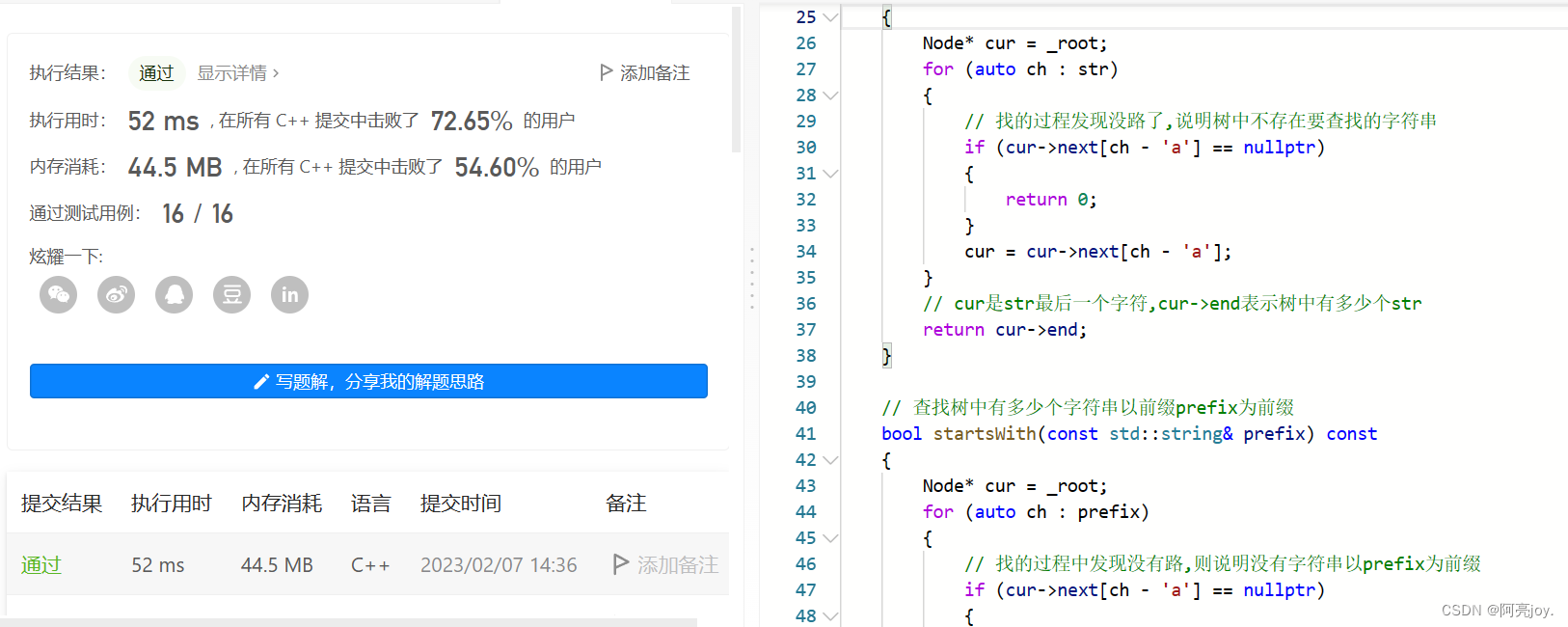
👉总结👈
本篇博客主要讲解了什么是前缀树以及前缀树的实现等。那么以上就是本篇博客的全部内容了,如果大家觉得有收获的话,可以点个三连支持一下!谢谢大家!💖💝❣️

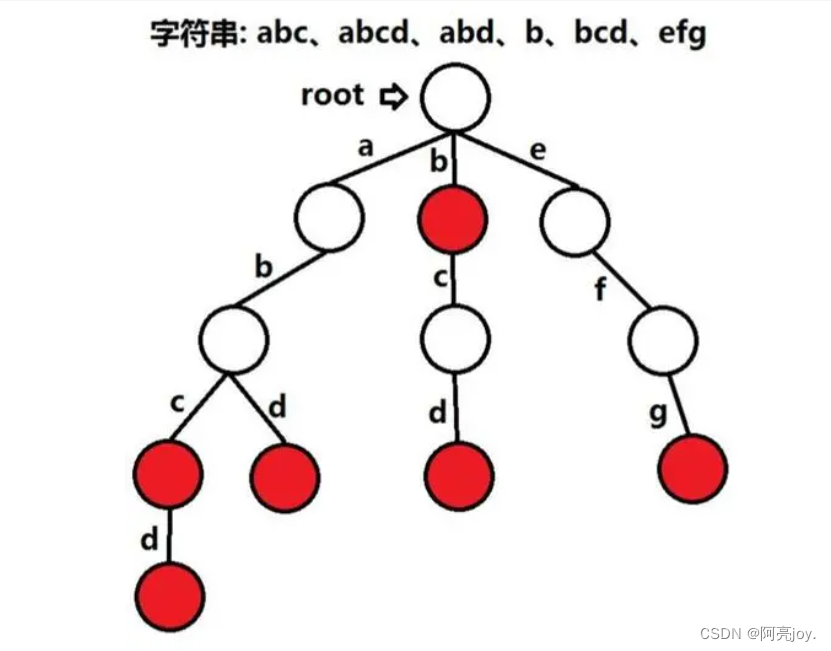
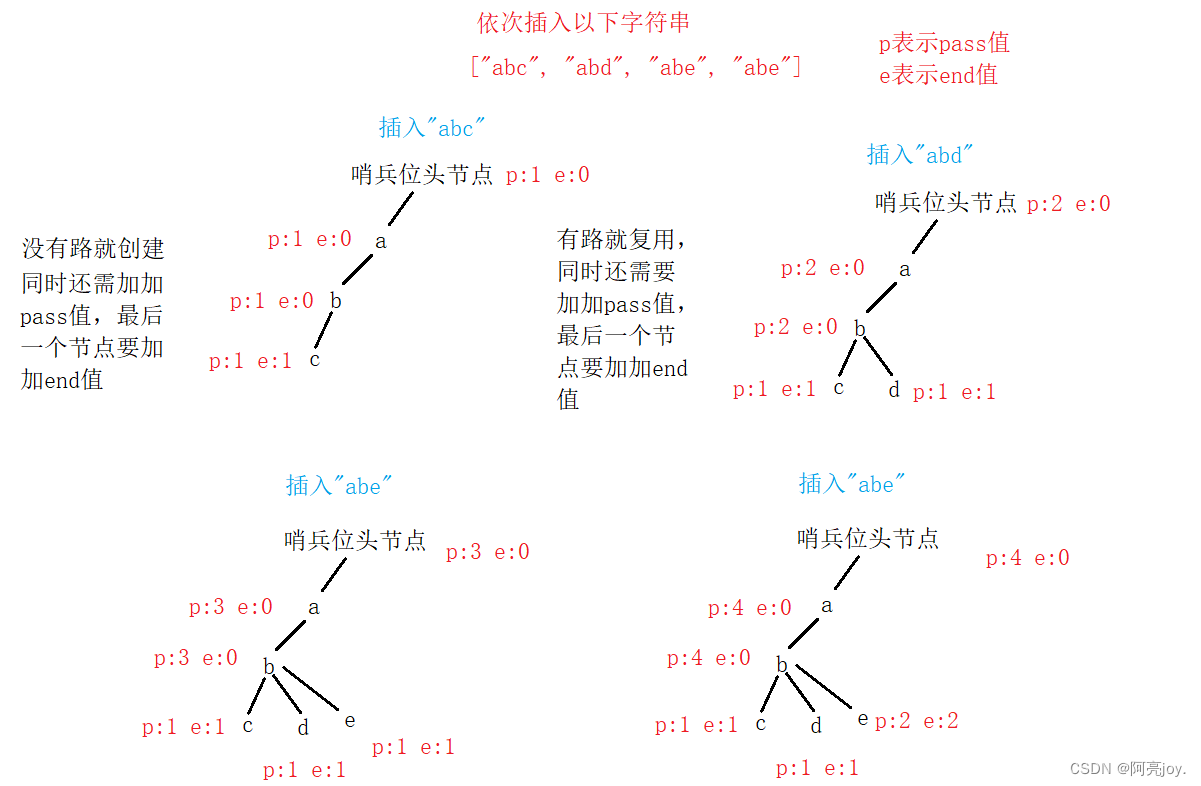

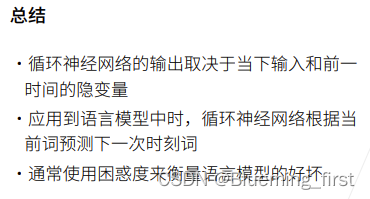


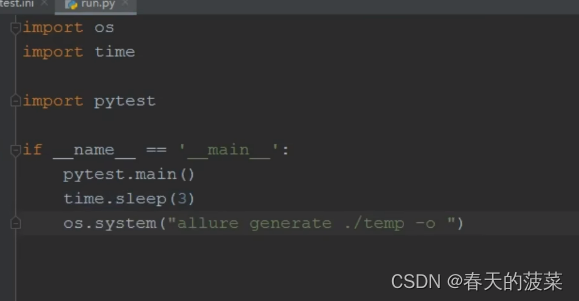

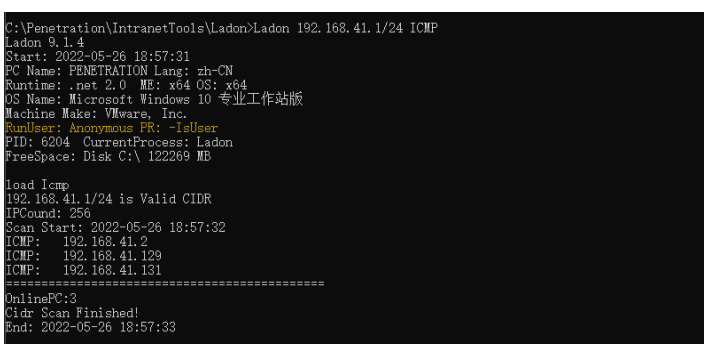
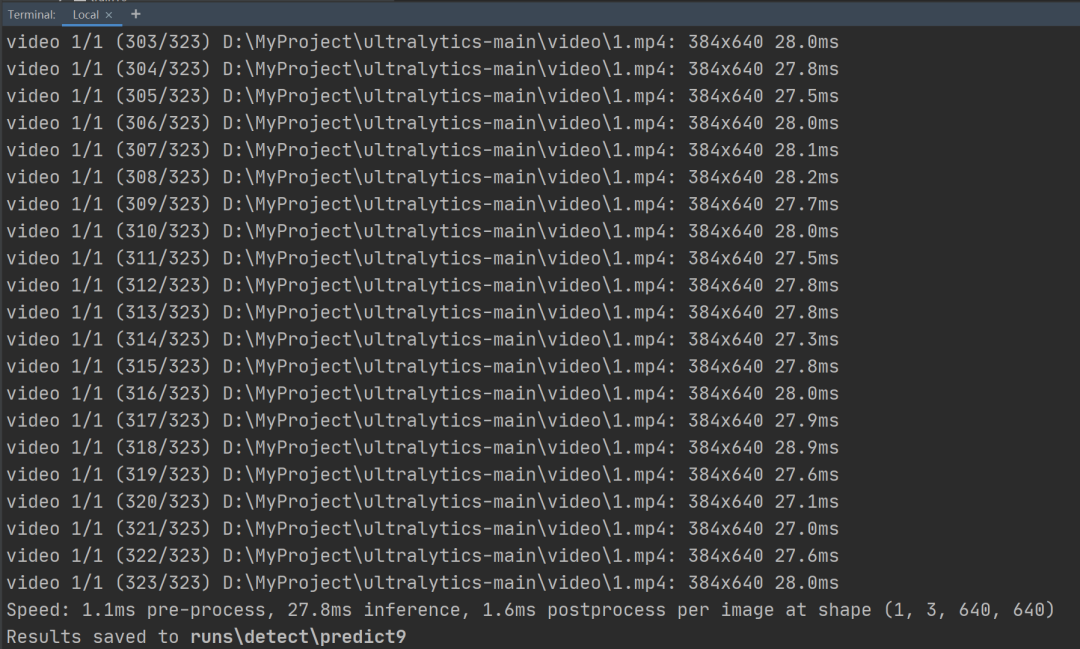

![[多线程进阶] 常见锁策略](https://img-blog.csdnimg.cn/e61a5be559734a7b805f4af11dff154e.png)

